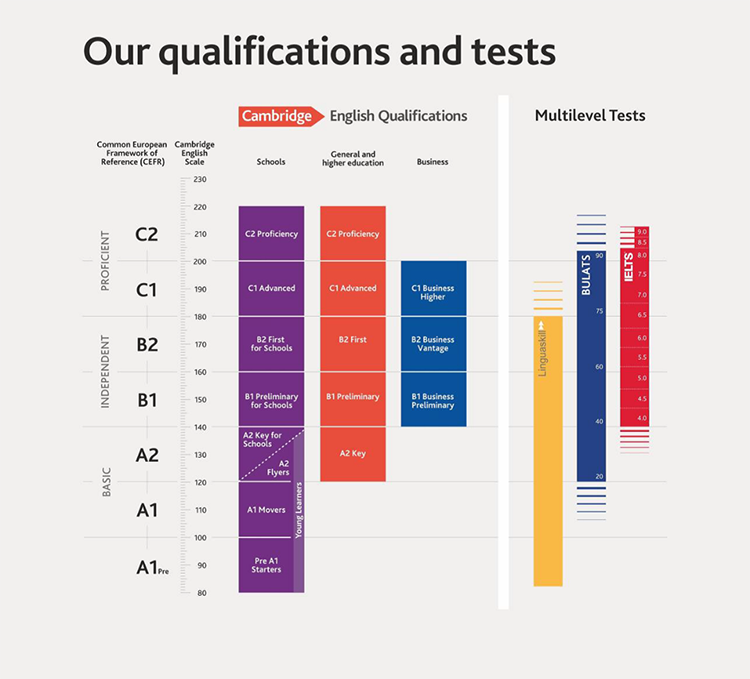
Language levels
Language levels and the CEFR- The Common European Framework of Reference for Languages
The work place language levels used in this portal (A1, A2, B1, B2, C1, C2) are expressed in terms of Common European Framework of Reference for Languages (CEFR) levels.
The CEFR is an international standard for describing language ability. The result of over twenty years of research, the Common European Framework of Reference for Languages: Learning, teaching, assessment (CEFR) is exactly what its title says it is: a framework of reference. It was designed to provide a transparent, coherent and comprehensive basis for the elaboration of language syllabuses and curriculum guidelines, the design of teaching and learning materials, and the assessment of foreign language proficiency.
These descriptors can be used to set clear targets for achievements within language learning, to help define language proficiency levels and to interpret language qualifications. It has become accepted as a way of benchmarking language ability, not only within Europe but worldwide, and plays a central role in language and education policy. It is used in Europe but also in other continents and is now available in 40 languages versions . It is used around the world to describe learners’ language skills.
Cambridge English Language Assessment was involved in the development of the CEFR and we continue to work towards its future development
The diagram below shows all of our English exams aligned against the six levels of the CEFR.

See a larger version of the CEFR diagram here
Capabilities at each of the CEFR levels are described with a series of ‘Can Do' statements. These ‘Can Do’ statements were developed by ALTE (The Association of Language Testers in Europe) of which Cambridge English Language Assessment is a founding member. The ‘Can Do’ statements provide a set of performance-related scales, describing what learners can actually do in the foreign language.
Please click here for more information and a video on the various CEFR language levels and how they work.
| CEFR Level | Language Level Description |
|---|---|
C2  |
Listening/Speaking - CAN advise on/handle complex delicate or contentious issues, such as legal or financial matters, to the extent that he/she has the necessary specialist knowledge. Reading - CAN understand reports and articles likely to be encountered during his/her work, including complex ideas expressed in complex language. Writing - CAN make full and accurate notes and continue to participate in a meeting or seminar. |
C1  |
Listening/Speaking - - CAN contribute effectively to meetings and seminars within own area of work and argue for or against a case. Reading - CAN understand correspondence expressed in non-standard language. Writing - CAN handle a wide range of routine and non-routine situations in which professional services are requested from colleagues or external contacts. |
B2  |
Listening/Speaking - CAN take and pass on most messages that are likely to require attention during a normal working day. Reading - CAN understand most correspondence, reports and factual product literature he/she is likely to come across. Writing - CAN deal with all routine requests for goods or services. |
B1  |
Listening/Speaking - CAN offer advice to clients within own job area on simple matters Reading - CAN understand the general meaning of non-routine letters and theoretical articles within own work area. Writing - CAN make reasonably accurate notes at a meeting or seminar where the subject matter is familiar and predictable. |
A2  |
Listening/Speaking - CAN state simple requirements within own job area, such as ‘I want to order 25 of...’. Reading - CAN understand most short reports or manuals of a predictable nature within his/her own area of expertise, provided enough time is given. Writing - Can write a short, comprehensible note of request to a colleague or a known contact in another company. |
A1  |
Listening/Speaking - CAN take and pass on simple messages of a routine kind, such as ‘Friday meeting 10 a.m.’. Reading - CAN understand short reports or product descriptions on familiar matters, if these are expressed in simple language and the contents are predictable. Writing - CAN write a simple routine request to a colleague, such as ‘Can I have 20X please?’ |






